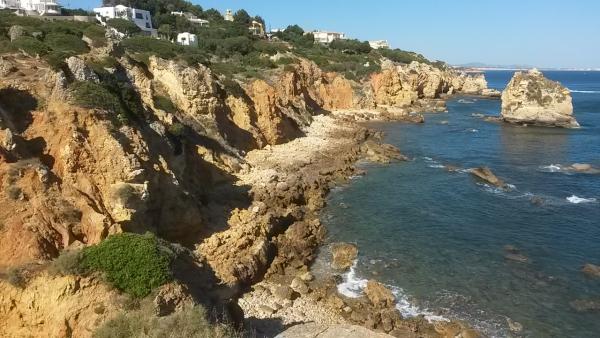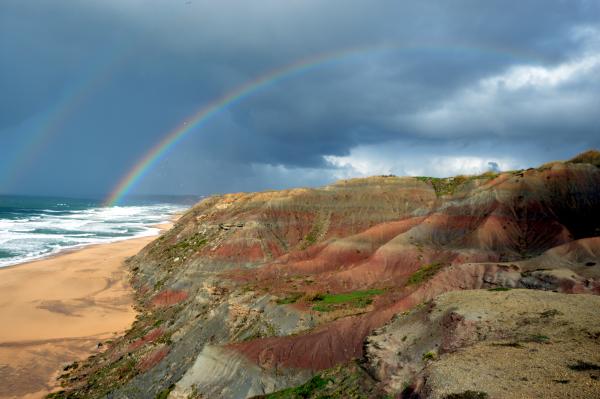Fieldtrips
2. The paleontology of Algarve
2 days (June 30 – July 01)
| Students* and members | 80€ | |
| Non-members | 100€ |
*Students are undergraduates and postgraduates (Masters and PhD candidates) only.
- Fees include transportation and accommodation for Saturday 30 at Hotel Montemar (in shared double rooms) in Lagos and lunches
The Algarve Basin is a sequence of Mesozoic and Cenozoic sediments, in Southern Portugal, forming a monocline that extends from the Spanish border to the Western coast. This basin stands over the Carboniferous terrains of the South Portuguese Zone with an unconformity, revealing a hiatus between the Carboniferous layers and the Triassic sediments (Grés de Silves Formation) at the base of the basin. Another significant hiatus is between the Cretaceous units and the oldest Cenozoic sediments, from the Miocene.
This simple stratigraphy presents several geological sites of interest that showcase the evolution of the basin. The unconformity between the Carboniferous terrains and the Grés de Silves Formation from the base of the Algarve Basin can be observed in a large scale in Praia do Telheiro, while the contact between the two main units of the Grés de Silves Formation can be observed in São Bartolomeu de Messines, where the first remains of placodonts from Portugal have been recently discovered.
In Rocha da Pena it is possible to observe more directly the transition from the Late Triassic continental environments (represented by red sandstones and claystones, including the locality bearing where many remains of the temnospondyl Metoposaurus algarvensis have been found) to the marine environments of the Early Jurassic (represented by the limestomes of the Picavessa Formation), which resulted from an initial phase of the opening of the Atlantic.
In Praia da Salema it is possible to observe one of the most well-known and easily accessed dinosaur tracksites in Southern Portugal, dated to the Cretaceous. More to the East, the marine sediments of the Miocene can be observed in different places, including Ponta da Piedade. This site shows many bivalve and brachiopod fossils, as well as various species of sharks and other fishes.
 7
7
________________________________
The field trip "The Jurassic of the Lusitanian Basin" is fully booked!
Fieldtrip includes:
Visit to Museu da Lourinhã and Dinoparque Lourinhã.
Paimogo, Caniçal and Vale Pombas. Late Jurassic, Lourinhã Fm. Continental paleoenvironment.
Toarcian GSSP stratotype at Ponta do Trovão, Peniche Municipality. Marine paleoenvironment.
Tracksite at Dagorda (Óbidos Municipality)
Lodging in the bungalows of Urban Art Camping at Peniche.

